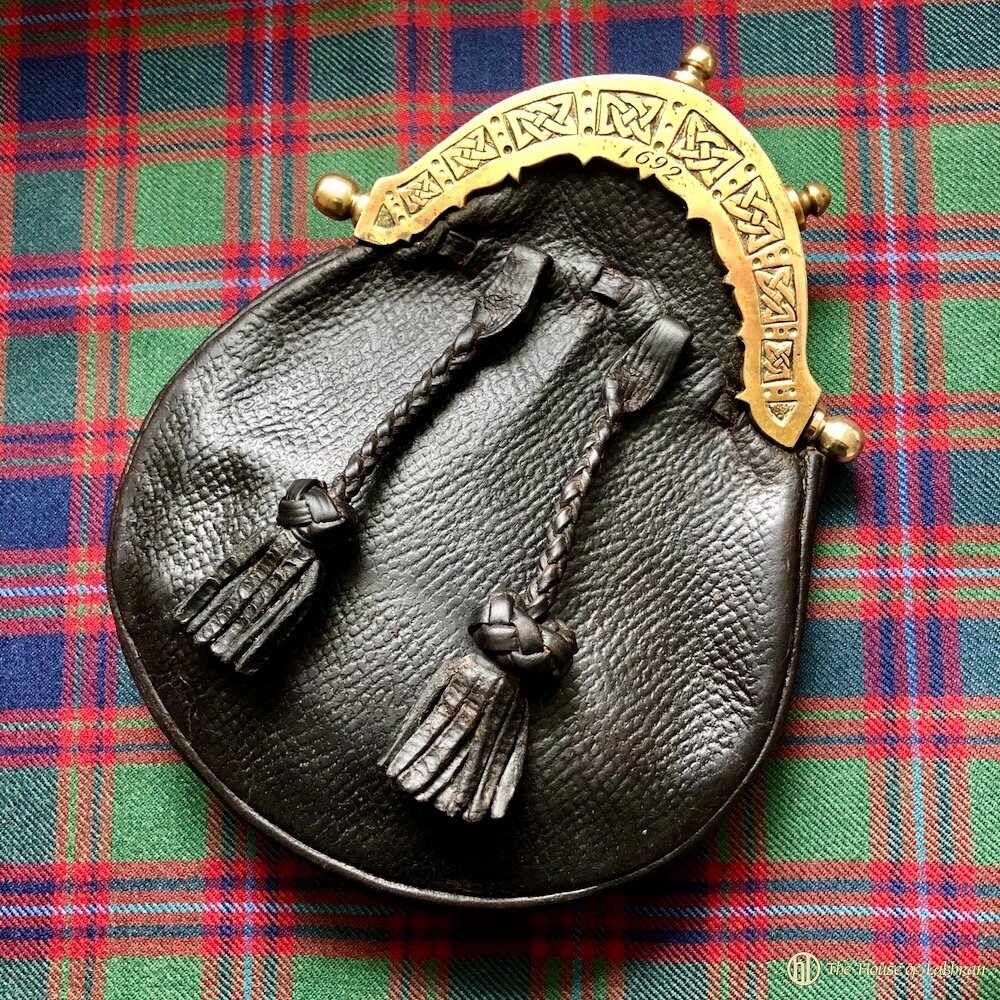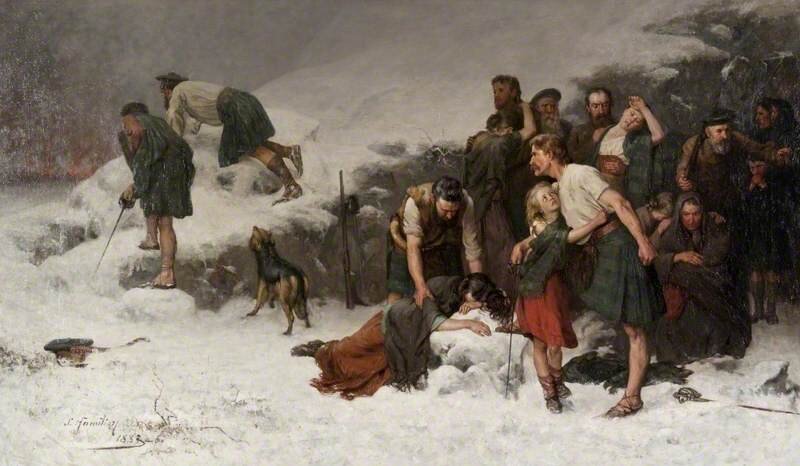Antique Jacobite Brass Sporran Restoration
Antique Jacobite Sporran Restoration
Antique Jacobite Sporran Restoration Project - When a sporran appears out of the mist of Highland history it is so important it is treated with great care. This was the case with a fine antique sporran from the late 18th or early 19th century discovered in a family estate collection along with a set of bagpipes.
The brass cantle has a cast bronze hinged cantle with Celtic knot work design. Below the Celtic knot design it is engraved with the date of 1692.
Why the date 1692?
The 1692 dated does not relate to the actual date of the sporran, which is thought to be from the late 18th early 19th century. It is thought to relate to the memory in the clan history of the MacIains - MacDonalds of Glencoe and the infamous Massacre of Glencoe, ( February 13, 1692 ).
With some careful restoration of the cantle underway we started on the restoration of the original leather pouch. The grain leather was desperate for some food. Over a period of weeks the leather was fed and restored.
With the restoration completed the sporran parts were put back together and this wonderfully historic sporran was restored to some of its former glory.
It’s full history we will sadly never know, but we are sure it would have a story or two to tell.
The Massacre of Glencoe
By James Hamilton (1853–1894) - Kelvingrove Art Gallery and Museum
The memorial cairn to the Massacre of Glencoe
Glencoe, 1692
John Blake MacDonald (1829–1901) -Royal Scottish Academy of Art & Architecture
The MacDonalds of Glencoe
The founder of the MacDonalds of Glencoe was Iain Fraoch MacDonald who died in 1368. He was a son of Aonghus Óg of Islay ( died 1314 - 1318 ) chief of Clan Donald, who had fought alongside King Robert the Bruce at the Battle of Bannockburn in 1314. Angus Og gained the lands of Glencoe from Robert the Bruce who, after the Battle of Bannockburn, bestowed these lands on him.
Angus Og gave his natural son, Iain Fraoch MacDonald, the lands of Glencoe. The hostile environment of Glencoe had such sparse soil that it drove people to raiding and stealing cattle from their neighbours.
The MacIains or Glencoe MacDonalds were one of three Lochaber clans with a reputation for lawlessness. The others being the MacGregors and the Keppoch MacDonalds.
Levies ( men enlisted for military service ) from these clans had served in the Independent Companies used to suppress the Conventicles in 1678–80, and took part in the devastating Atholl raid that followed Argyll's Rising in 1685.
This had made these clans an obvious target when the Duke of Argyll returned to power after the 1688 Glorious Revolution in Scotland.
Many Scottish clans had remained loyal to King James II after he was replaced on the English and Scottish thrones by William III in 1689. In August 1691 the government offered an indemnity to all chiefs who should take an ‘oath of allegiance’ before January 1, 1692.
Chieftain Alasdair MacIain; called Alasdair Ruaidh - Alexander MacDonald of Glencoe was then unable to take his oath at Fort William because there was no magistrate to receive it. He was told he would have to go on to Inveraray.
MacIain - Alexander MacDonald was delayed by heavy snow at Barcaldine. This meant his submission could not take place in time and he was two days late in reaching Inveraray to sign the Oath of Allegiance.
Sir John Dalrymple, William’s secretary of state for Scotland, thereupon issued an order under the king’s signature for military punishment of the MacDonalds. “Letters of fire and sword,” authorized savage attacks upon recalcitrants
The Massacre of Glencoe 1692
The Massacre of Glencoe ( February 13, 1692 ), has a very sad place in the memories of the MacDonald’s of Glencoe clan and Scottish history.
More than 100 of Argyll’s soldiers, had been quartered amicably with the MacDonalds for more than a week,
Suddenly in the early hours of the 13th of February under the commanded by Captain Robert Campbell of Glenlyon the his troops attacked their MacDonald hosts. Although it has not been proved John Campbell, Earl of Breadalbane and Holland, a neighbour and an enemy of the MacDonalds, was widely suspected of planning the attack.
Many of the MacDonald clan escaped into the snow, but it is thought the chief along with approximately 33 men, 2 women, and 2 children were killed.
The rest of the clan headed out into the snow. It is now thought some of them managed to skirted the end of Loch Leven. Many of the clan including the old chiefs eldest son John MacIain MacDonald, 13th of Glencoe (1657 - 1714) made their way to Roy Bridge. Here they were given shelter by their old friends, who were actually Campbells, renowned for their hostility to the Clan Campbell of the Duke of Argyll.







